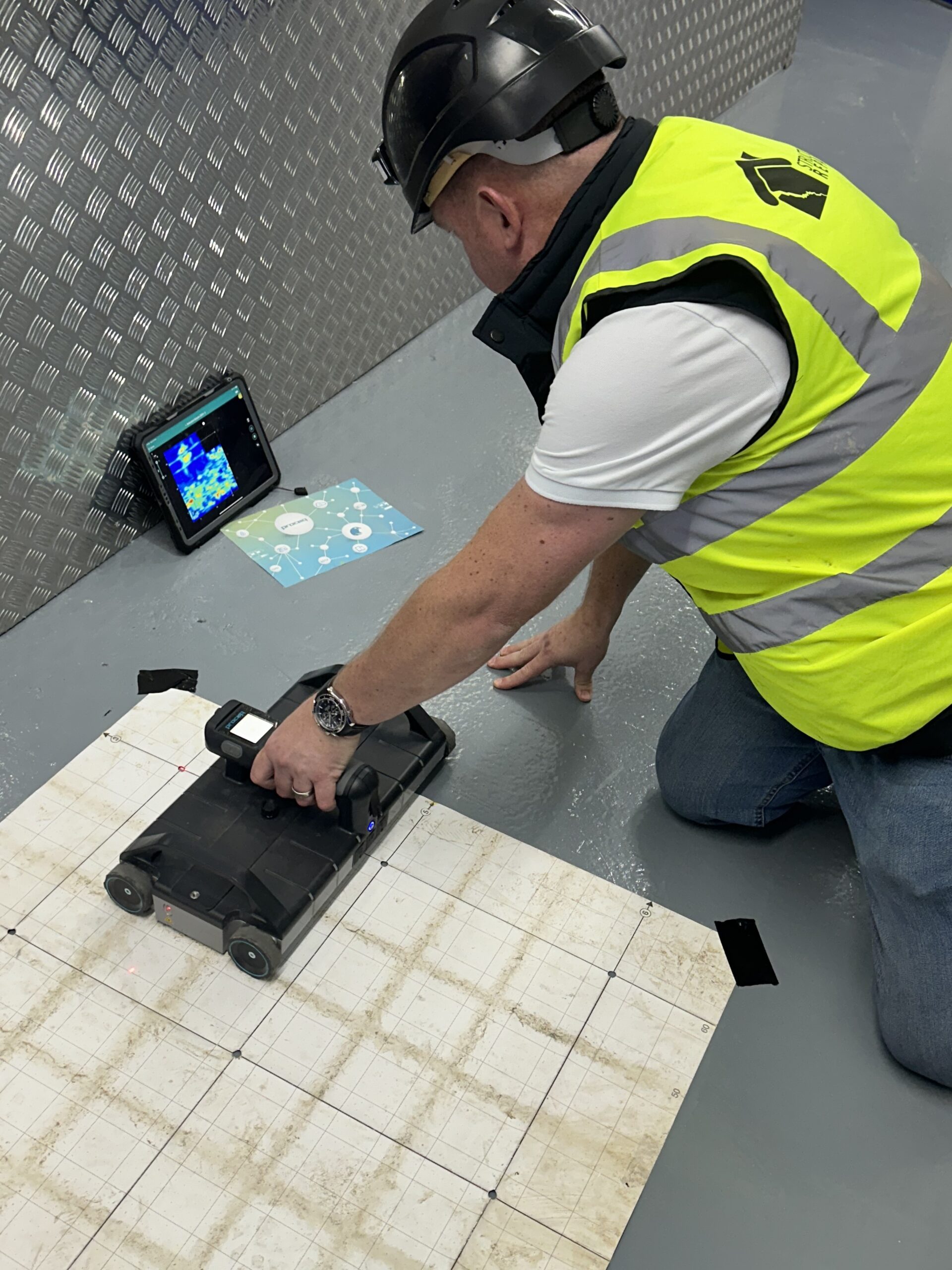Exploring the Depths: A Comprehensive Guide to Concrete Scanning and Its Diverse Applications
In the realm of building and facilities growth, the precise process of concrete scanning holds a crucial function in making sure the architectural honesty and safety of jobs. As technology remains to develop, the applications of concrete scanning have increased far beyond plain surface-level analyses. From spotting rebar and post-tension cords to drawing up channels and spaces concealed within concrete structures, the capabilities of contemporary scanning strategies are both remarkable and essential. The real deepness of concrete scanning's potential reaches even better, branching into unanticipated markets and stimulating ingenious options. The interconnected web of opportunities that concrete scanning provides is not only interesting however also vital for the improvement of different markets.
Significance of Concrete Scanning
Understanding the value of concrete scanning is essential in ensuring the safety and security and stability of structures during building and construction and restoration projects. Concrete scanning makes use of sophisticated innovations such as ground-penetrating radar (GPR) and electromagnetic induction to identify embedded objects, voids, or various other anomalies within concrete frameworks.
Moreover, concrete scanning plays a crucial function in making sure conformity with building ordinance and guidelines that mandate the protection of existing architectural components during building activities. By precisely drawing up the internal make-up of concrete, scanning innovations enable building experts to make enlightened decisions that maintain the structural stability and longevity of buildings and infrastructure jobs. Basically, the importance of concrete scanning hinges on its capacity to protect both the architectural honesty and the personnel associated with building undertakings.
Technologies Used in Concrete Scanning
Concrete scanning depends on sophisticated modern technologies such as ground-penetrating radar (GPR) and electromagnetic induction to accurately detect embedded things and abnormalities within concrete structures. Ground-penetrating radar runs by emitting high-frequency electro-magnetic waves into the concrete.
Electro-magnetic induction, on the various other hand, functions by producing electro-magnetic areas around a concrete framework via a transmitter coil. When metal things exist within the concrete, they interrupt these electromagnetic areas, triggering eddy currents to flow with the steel. By gauging the changes in the electro-magnetic areas with a receiver coil, the system can pinpoint the place of metallic things in the concrete.
These innovative innovations play a critical role in non-destructive testing, making sure the safety and honesty of concrete frameworks in various sectors.
Applications in Building Industry
Within the building market, concrete scanning modern technology discovers diverse applications that enhance project performance and safety and security. Furthermore, concrete scanning is used for situating gaps, such as air pockets or areas of wear and tear within concrete, which can jeopardize the overall strength of a framework. Concrete scanning plays an important role in high quality control by confirming the thickness of concrete covers over support, making sure compliance with design specifications and standards.

Security Advantages of Concrete Scanning
In the realm of building safety and security, the execution of concrete scanning innovation offers a paramount benefit in preemptively recognizing prospective threats and fortifying structural stability. By making use of advanced scanning approaches such as ground-penetrating radar (GPR) and electro-magnetic induction, construction teams can properly find rebar, post-tension cables, channels, and various other surprise things within concrete structures. This aggressive approach considerably minimizes the threat of unexpected strikes during drilling, cutting, or coring activities, thereby protecting against costly damages, injuries, and project delays.
Furthermore, concrete scanning improves worker security by offering real-time details concerning the architectural problem of concrete aspects. This information makes it possible for building experts to examine the stability of existing structures, determine wear and tear or defects, and make informed choices pertaining to repair and maintenance procedures. By attending to prospective security worries without delay, concrete scanning contributes to creating a safe functioning setting and alleviating the likelihood of architectural failings or accidents on building and construction websites. Eventually, the safety advantages of concrete scanning not his comment is here just secure assets and lives but additionally promote sector requirements for quality and integrity.
Future Patterns in Concrete Scanning
Arising innovations in scanning innovation are positioned to transform the area of concrete examination and analysis. One significant fad that is check these guys out acquiring grip is the integration of artificial knowledge (AI) and equipment knowing algorithms into concrete scanning devices. By taking advantage of the power of AI, these systems can assess large amounts of information gathered throughout scanning procedures to offer more detailed and precise insights right into the problem of concrete frameworks. This can help in finding covert flaws, anticipating possible architectural failings, and even recommending upkeep approaches.
Another substantial fad is the growth of more straightforward and mobile scanning gadgets. Miniaturization of scanning devices enables simpler access to restricted spaces and remote locations, making evaluations a lot more thorough and effective. Furthermore, advancements in wireless interaction modern technologies allow real-time data transfer and analysis, helping with quicker decision-making processes.
Moreover, there is an expanding focus on sustainability in concrete scanning modern technologies - RainierGPR Concrete Scanning. Manufacturers are significantly integrating environment-friendly materials and energy-efficient features right into their devices to reduce ecological impact. These future fads are set to enhance the performance, accuracy, and sustainability of concrete scanning practices, forming the sector's future landscape
Final Thought
Finally, concrete scanning plays an essential duty in the construction market by ensuring the safety and security and efficiency of numerous projects. By using advanced innovations, such as GPR and radar imaging, professionals have the ability to precisely identify prospective dangers within concrete structures. The applications of concrete scanning are huge and continue to develop, making it a necessary device for keeping the honesty of structures and framework. As technology developments, the future of concrete scanning holds promising growths for improving construction processes.
